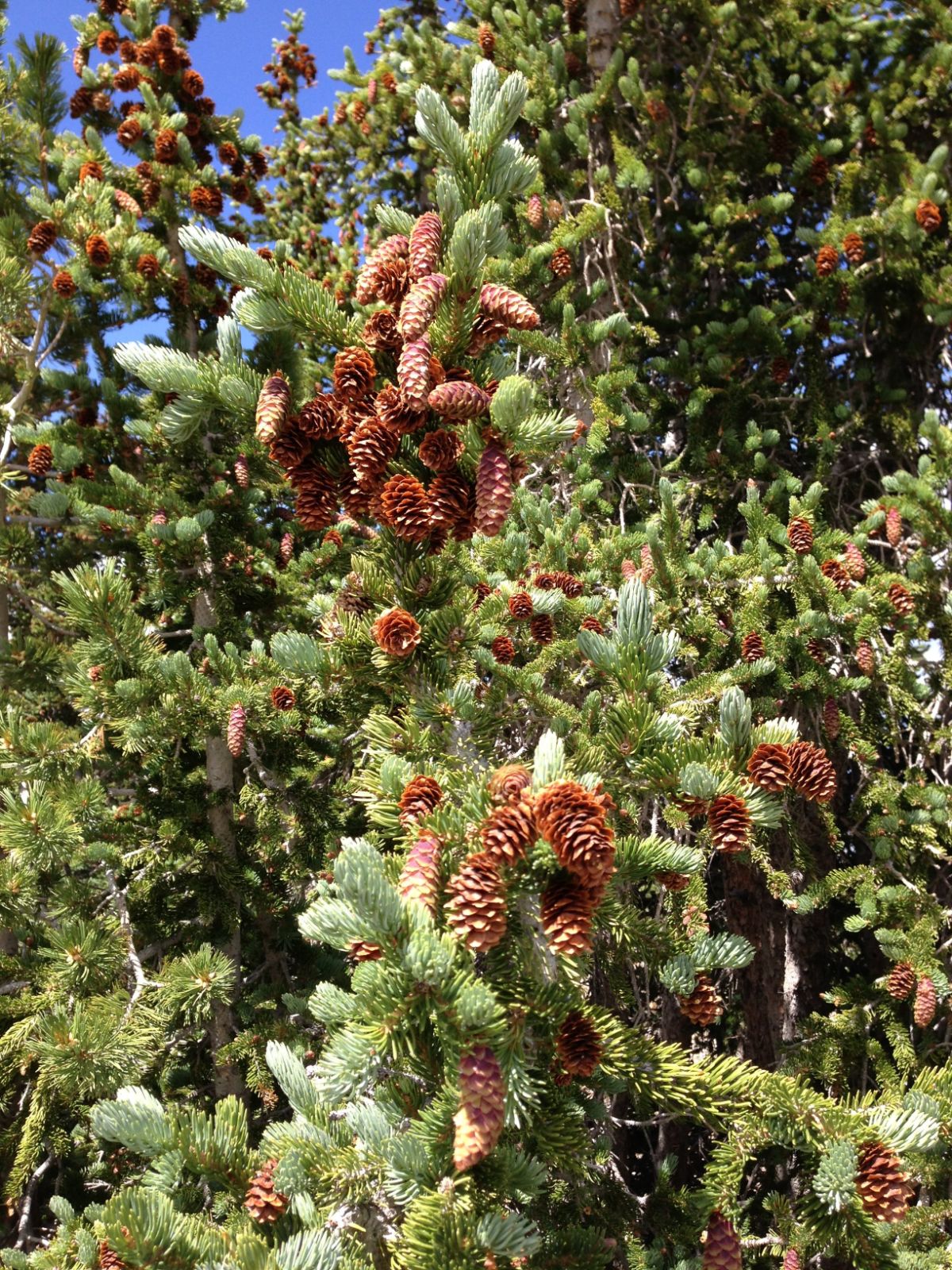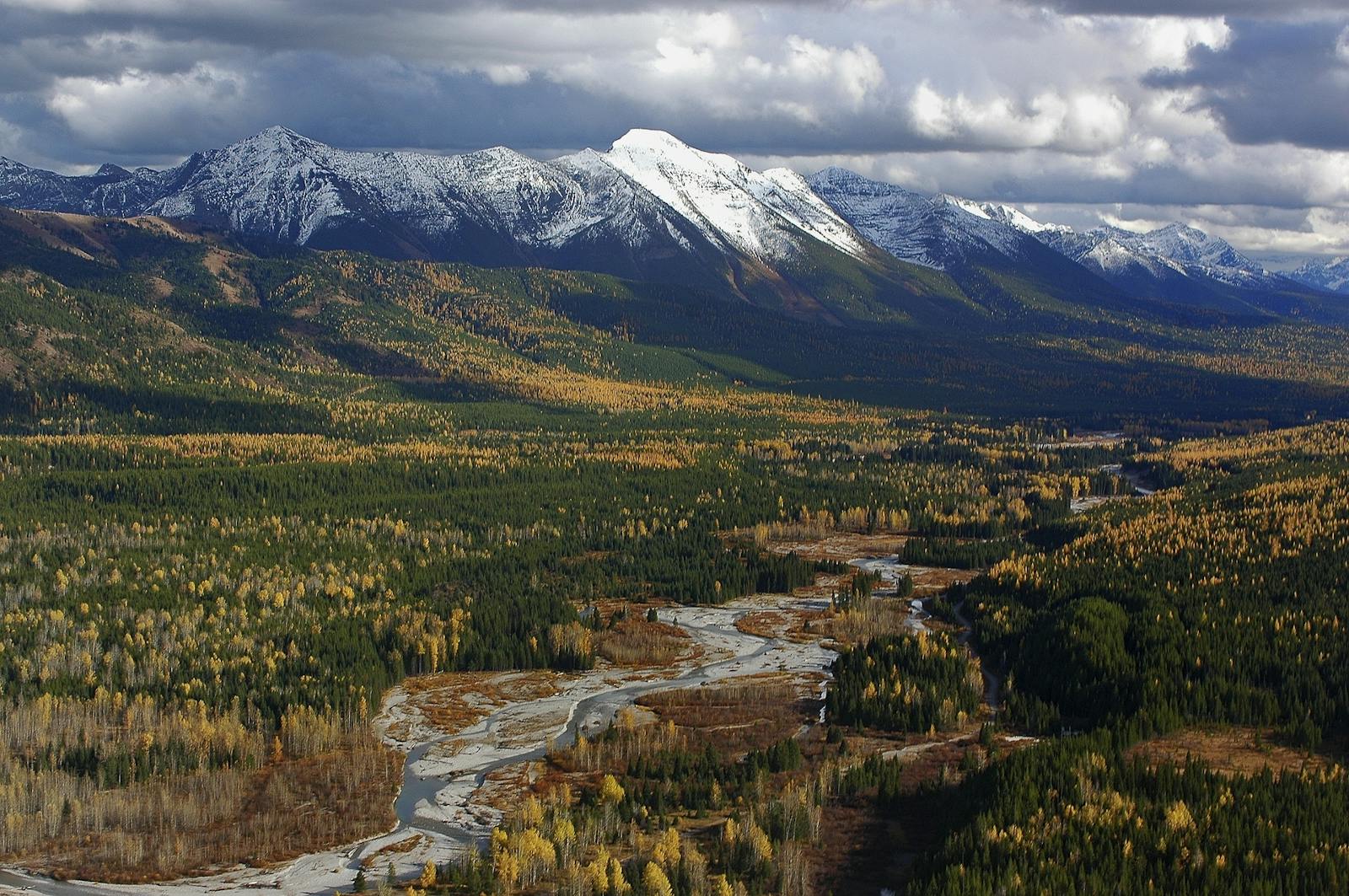Northern Rockies Conifer Forests
The ecoregion’s land area is provided in units of 1,000 hectares. The conservation target is the Global Safety Net (GSN1) area for the given ecoregion. The protection level indicates the percentage of the GSN goal that is currently protected on a scale of 0-10. N/A means data is not available at this time.
Bioregion: Greater Rockies & Mountain Forests (NA13)
Realm: Northern America
Ecoregion Size (1000 ha):
28,392
Ecoregion ID:
361
Conservation Target:
61%
Protection Level:
4
States: United States: WA, ID, MT. Canada: BC, AB
The Northern Rockies Conifer Forests ecoregion is a vast area that stretches some 966 km from north to south. This ecoregion encompasses the well-known Rocky Mountain parks of Canada (Jasper, Banff, Yoho, Glacier, Kootenay, and Waterton Lakes National Parks, as well as several Provincial Parks) and the United States (Glacier National Park and several Wilderness Areas, including the Bob Marshall, Selway-Bitterroot, and Cabinet Mountains).
The ecoregion borders the Central British Columbia Mountain Forests ecoregion to the north, the Alberta-British Columbia Foothills Forests ecoregion to the north and northeast, the Canadian Aspen Forests and Parklands and the Montana Valley and Foothill Grasslands ecoregions to the east, the South Central Rockies Forests ecoregion to the south, and the Palouse Prairie, Okanogan Dry Forests, and Fraser Plateau and Basin Conifer Forests ecoregions to the west. Despite its wealth of parks, only 23% of this ecoregion is protected, underscoring a pressing need to protect remaining wildlands before they are compromised by human activities.

The flagship species of the Northern Rockies Conifer Forests ecoregion is the Engelmann spruce. Image credit: Creative Commons
The climate of the Northern Rockies Conifer Forests ecoregion is distinct from the drier rain-shadow forests to the west, the cooler forests to the north, and the drier foothills forests and grasslands to the east. The general climate is a combination of montane southern cordilleran, subalpine, and alpine. Given the extensive range of latitude and rain-shadow effects from the mountains, local climatic conditions vary widely. The western edge of the ecoregion receives some maritime effects from the Pacific Ocean, whereas the eastern portion experiences harsher continental conditions.
The Canadian part of the ecoregion has mean annual temperatures ranging from 3.5ºC in the east to 5.5ºC in the west. Mean summer temperatures are in the range of 12.5ºC to 14.5ºC and mean winter temperatures -3.5oC to -6.5ºC. Mean annual precipitation ranges from 500 to 800 mm in the lowlands, with valleys characterized by warm summers with frequent showers and mild, snowy winters, to over 1,000 mm at high elevations.
Most of the region is also known as the Columbia Mountains, which contain the highest peaks in the Canadian Rockies, up to slightly more than 3,900 m in elevation. Glaciation has shaped many valleys. Coniferous forest of several types is the dominant vegetation across the ecoregion. The western, windward slopes are characterized by inland temperate rainforests at lower elevations, perhaps the largest expanse of such forests on Earth.

Grizzly bear. Image credit: Creative Commons
These forests are more similar to those of the Cascades and Pacific coastal ranges than they are to the drier forests more typical of the Rocky Mountains. Western hemlock, western red cedar, Pacific yew, and western larch are characteristic trees of these forests. Montane forests include Douglas-fir, lodgepole pine, white spruce, and subalpine fir, along with some western white pine and western larch. Subalpine forests are dominated by Engelmann spruce and subalpine fir, along with stands of lodgepole pine, which develop after severe or mixed-severity fire. Other common plant communities are foothill grasslands, mountain meadows, riparian woodlands, and upper treeline/alpine tundra.
The mammals of this ecoregion include classic wild mountain species such as wolf, grizzly bear, wolverine, and lynx, along with woodland caribou, black bear, puma, coyote, black-tailed and white-tailed deer, moose, and mountain goat. Bobcat and marten occur in the southeastern portion of the ecoregion.
Notable birds include harlequin duck, ruffed grouse, spruce grouse, dusky grouse, golden eagle, great gray owl and northern pygmy-owl (among other owls), Steller’s jay, Clark’s nutcracker, American dipper, and several species of thrushes, warblers, and woodpeckers. The black-backed and American three-toed woodpeckers depend on moderately to severely burned forests, as do a number of other species.
This ecoregion remains mostly wild, but given the low level of protection, it is threatened by logging, mining, oil and gas development, intensive recreation, and other human activities. Priority conservation actions for the next decade are to: 1) vastly increase designation of conservation lands; 2) improve forest management and reduce the rate of logging; and 3) greatly slow the rate of energy development and intensive recreation.
Citations
1. Ricketts, T.H. et al. 1999. Terrestrial Ecoregions of North America: A Conservation Assessment. Island Press, Washington, D.C.
2. Ecological Stratification Working Group. 1995. A National Ecological Framework for Canada. Environment Canada and other agencies, Ottawa.
3. DellaSala, D.A., P. Alaback, L. Craighead, T. Goward, P. Paquet, and T. Spribille. 2011. Temperate and boreal rainforests of the Pacific Coast of North America. Pages 82-110 in D.A. DellaSala, editor. Temperate and Boreal Rainforests of the World. Island Press, Washington, D.C.

.jpg?auto=compress%2Cformat&w=1600)


